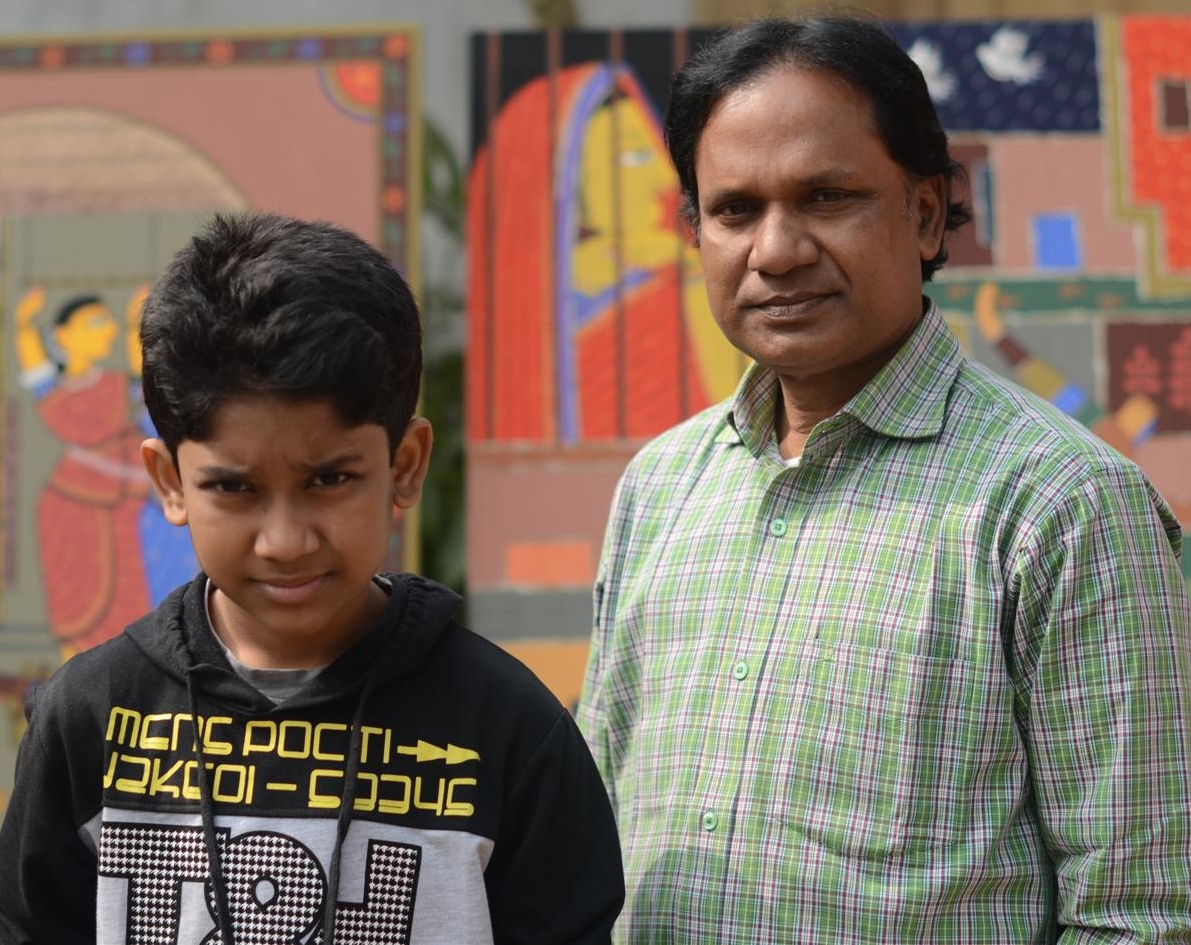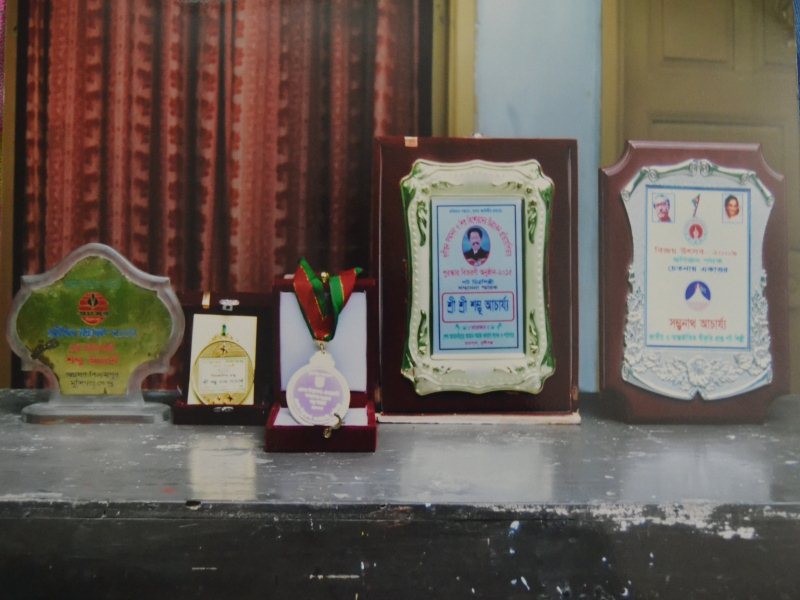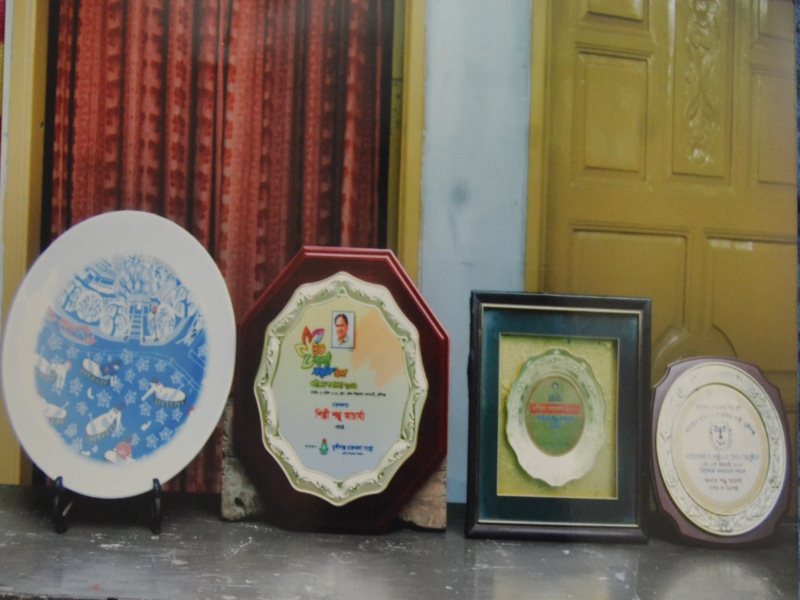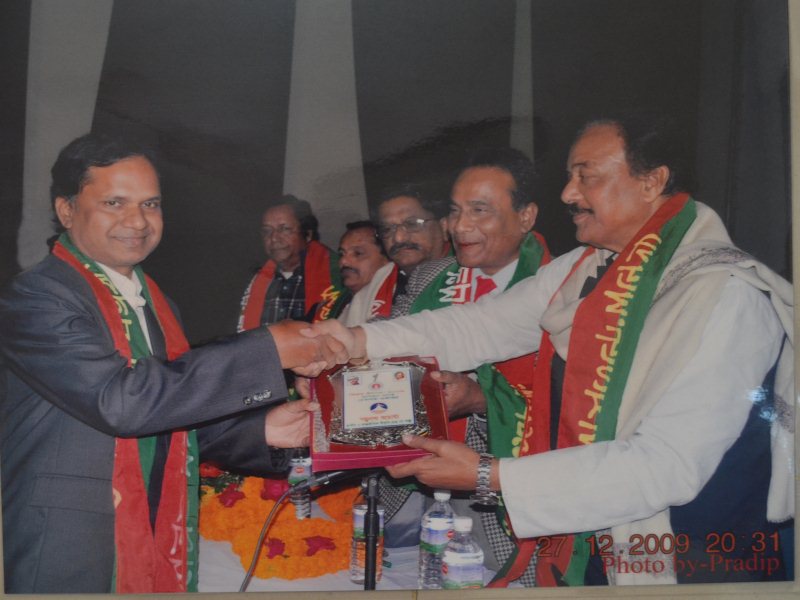'ABOUT SHAMBHU ACHARYA'

"Shambhu Acharya with his son "

"Patua Shudir Chandra Acharya and Komola Bala Acharya "
Shambhu Acharya was born in 1954. His father was patua Shudir Chandra Acharya and mother was Kalpana Bala Acharya who herself was an Alpona painter. His family has been practicing 'patachitra or scroll painting', for more then 450 years or nine generation. The themes of their paintings include of Gazir pata, Sree Krisna, Muharram, Ramayan,Mahabharata,Manusha Mangal, Rass leela and also various other themes from the local folk culture. Shambhu has the responsibility of carrying forward the family tradition of 'patachitra', His works have been exhibited at the Spitz Gallery London and are being collected by art lovers both overseas and in Bangladesh. Shambhu Acharya lives in kalindipara, Ritabi Bazer, Mirkadim, pouroshova Munshigang, Bangladesh with his wife , three daughters and a son.






















































































































